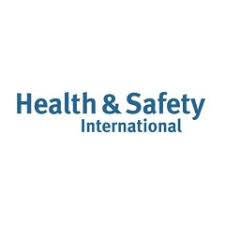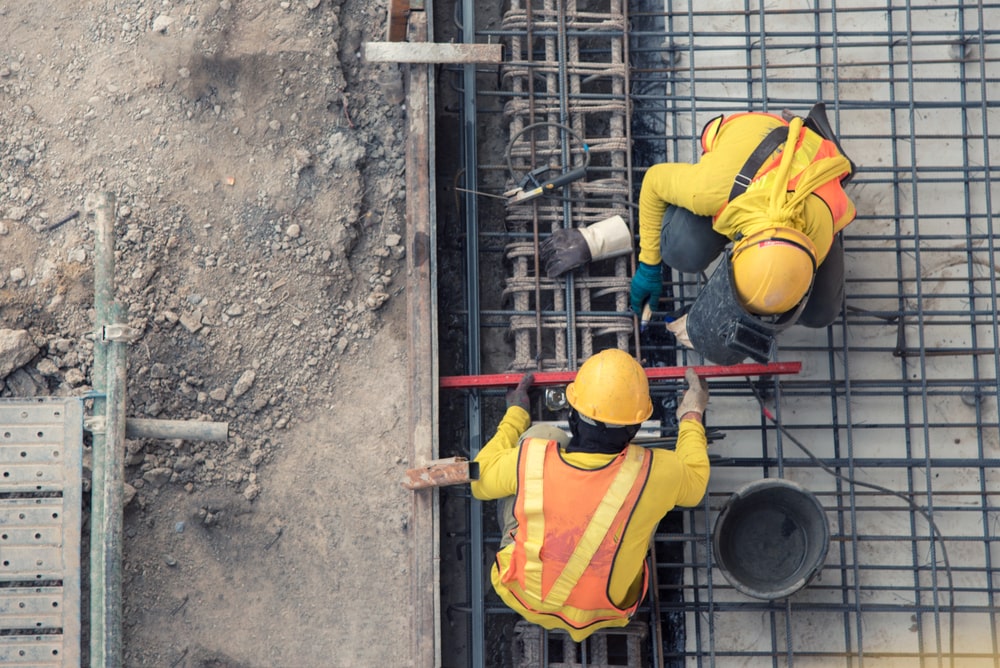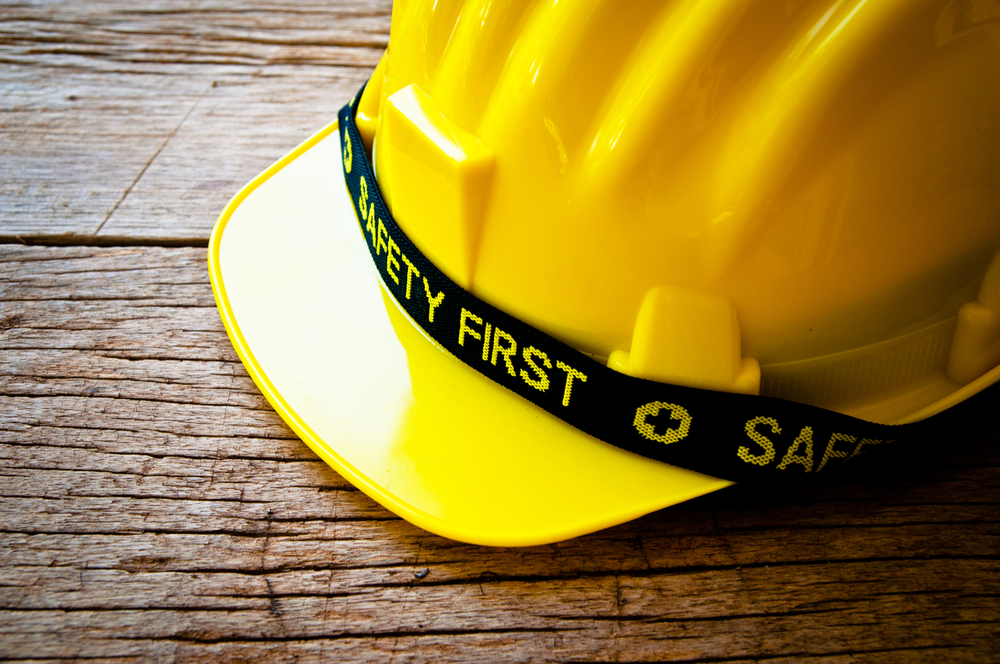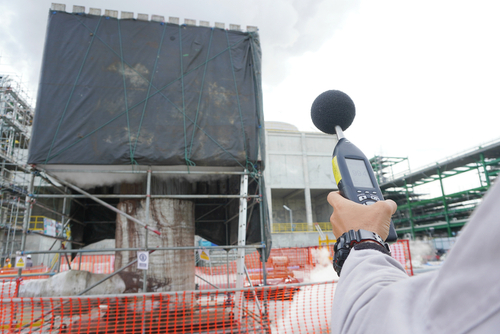News Post
March 2015 Newsletter
Contractor fined after roof is blown off in high winds
A firm has been prosecuted for safety failings after the roof of a temporary extension at a Power Station was blown off in high winds – putting workers and others delivering coal to the site at risk.
A 25-metre span of the roof, that was around six metres long and weighed two tonnes, was blown off its eight-metre high scaffolding end supports.
It struck the roof of an adjacent biomass shed before landing 50 metres away beyond the other end of the shed on a roadway used by delivery wagons and occasional pedestrians. Fortunately the timing of the incident, just before Christmas, meant that the normally busy road was deserted.
The contractor responsible for the roof, was prosecuted at Magistrates’ Court after an investigation by the HSE identified issues with its design and build.
HSE inspectors concluded that the firm:
- had failed to ensure those involved in the construction of the extension had the necessary knowledge and experience to do the work;
- had failed to properly communicate with the build team; and
- had failed to check the construction was carried out as it should be.
The court heard that the roof structure was part of a temporary extension to a permanent shed at the power station, designed to increase capacity and provide weather protection during deliveries by tipper wagons.
The firm had been instructed by the owners of the power station to build a temporary extension to the biomass shed that was designed by an external scaffold design company. This was dismantled once it was no longer required.
Then the firm was asked to install another temporary extension, this time designed by the in-house design team. Although similar to the first structure, it was to be shorter and lower.
It was constructed by the firm’s own workforce with the help of a specialist roofing contractor. However, poor communication resulted in an incomplete design plan being used.
HSE established that although the structure was routinely inspected during the build and once it was brought into use that, it was inherently unsafe.
Magistrates were told that it was noted that the weather was worse than normal, with the winds picking up. This meant some of the sheeting on the structure needed to be re-tied.
The temporary roof was blown off its end supports early the following morning. It ended up straddling a safety barrier and a dry riser pipeline between the main delivery access road and the legs of an adjacent conveyor.
The firm, was fined £10,000 and ordered to pay £1.045.50 in costs after pleading guilty to breaching Section 3(1) of the Health and Safety at Work etc Act 1974.
After the case, HSE inspector said: “Thankfully no one was injured as a result of this incident, but it should not and need not have happened.
“It was easily preventable had the firm ensured the work was carried out to the correct standards; that its team had the necessary skills and experience to carry out the work; and had it checked on the work during construction of the extension.
“Regardless of the wind speeds, no-one knew whether the structure would be properly built or had been properly built, so they could give no assurances about the robustness of the roof. As a result of these failings, workers and others visiting the power station were needlessly put at risk.”
Suspended prison sentence after an elderly worker is killed by a bull
A dairy farm director has been handed a four-month prison sentence, suspended for a year, after a 75-year-old worker was crushed by a bull.
In court it was heard how the company (which was fined £133,333 for breaches relating to the incident) and director had failed to plan against the risks posed by working with cattle which led to the worker’s death.
The worker, died in hospital nine days after he was rammed several times against a gate by a Holstein friesian bull weighing around a tonne. He suffered catastrophic crush injuries including fractured vertebrae, a broken pelvis and ribs, a punctured lung and lacerations/damage to his internal organs.
Crown Court heard that the worker was moving cows and the bull into a cubicle shed at the Dairy Farm, run by the farm director.
After a colleague heard shouting, the worker was found in a sitting position in the corner of the yard with the bull directly in front of him. Farm workers managed to get the bull away and secure the area.
HSE investigated the incident and served an Improvement Notice for failing to carry out a suitable and sufficient assessment of the risks to the safety of employees from handling cattle. The company subsequently carried out an assessment.
HSE found the farm and its director had failed to plan against the risks posed by working with cattle which led to the workers death.
The farm director, was sentenced to four months in prison, suspended for 12 months, and ordered to pay costs of £10,073 after admitting breaching section 2(1) of the Health and Safety at Work etc. Act 1974, and regulation 3(1)(a) of the Management of Health and Safety at Work Regulations 1999.
The company was fined £133,333 and ordered to pay costs of £19,421 after admitting the same two breaches.
Speaking after the hearing, HSE inspector said: “The worker was exposed to the dangers posed by working at close quarters with large herd animals including a dairy bull, by a lack of planning and risk assessment by his employer.
The director and his company have neglected their duties by not putting safety measures in place – this has ultimately led to an elderly worker losing his life in tragic circumstances.”
£200k fine, suspended sentence and publicity order following safety breaches
A building firm was sentenced at n Crown Court after it pleaded guilty to corporate manslaughter following an incident where a man died as a result of falling through a fragile roof. HSE said that the company did nothing to make sure he was safe while he worked on the roof.
The company, a building and joining firm, pleaded guilty to corporate manslaughter and a breach of the Health and Safety at Work etc. Act 1974 by failing to ensure the safety of employees. The company was fined £200,000 for the corporate manslaughter offence, and £20,000 for the health and safety breach.
The owner of the company, also pleaded guilty to a breach of the same act and was sentenced y to eight months in prison, suspended for two years; 200 hours unpaid work; a publicity order to advertise what happened on the company website for a set period of time, and to take out a half page spread in the local newspaper; and pay costs of £31,504.77.
Emergency services attended the site, following a report that a man had fallen through a roof. The man, had been working on the roof and had fallen through the skylight from a height of approximately 7.6 meters onto a concrete floor. He was taken to Hospital where he died a short time later.
A DS for the Constabulary said: “This has been a long and complex investigation, and we have worked closely with the Health and Safety Executive to establish what happened on that tragic day. I hope that this case serves as a warning to other businesses in the area that health and safety measures are extremely important, and if not implemented correctly can result in devastating consequences.
The investigating inspector at HSE, added: “the worker tragically lost his life because the company that employed him did nothing to make sure he was safe while he worked on a fragile roof.
“The employer knew the clear panels on the roof weren’t safe to walk on but neither he nor his company provided any equipment to prevent workers falling to their death. If scaffolding or netting had been fitted under the fragile panels, or covers had been fitted over them, then the worker would still be here today.”
Firm in court after worker is left paralysed in roof fall
A court has heard how a worker has been confined to a wheelchair after suffering irreparable damage to his spinal cord after he fell almost four metres through a fragile rooflight.
The worker was replacing plastic rooflights on a farm shed when he fell and was left paralysed. His employer has now been fined £50,000 for serious safety failings relating to the incident.
It was heard in court that the the male, a time served and experienced worker without any formal training in roofwork, was employed by the company to carry out roof repairs at the farm.
The worker had climbed onto the roof using a ladder and crawlerboards to allow him to access the rooflights. He removed three of them before being called down for a tea break.
He has no recollection of the incident that followed. A colleague knew he had gone back up onto the roof as he heard him moving about before hearing a loud noise. He found the man lying on the floor underneath a fourth rooflight which had a large hole in it.
He was airlifted to hospital with broken ribs, a broken sternum and punctured lungs. His spine was fractured in two places, damaging his spinal cord, which has left him confined to a wheelchair with no movement or sensation in his legs. He also only has 50 per cent lung efficiency due to partial paralysis of his chest muscles.
An investigation by HSE found that the company had identified that the roof surface was likely to be fragile but failed to carry out a site-specific risk assessment and subsequently failed to plan the work properly.
The company also failed to identify that the work to replace the rooflights could be done from a working platform beneath the roof, or by using safety nets or harnesses to keep workers safe.
There were no measures in place to prevent someone standing on the fragile roof or rooflights other than the crawlerboards, which did not have any handrails to prevent workers stepping off them.
The company, was fined £50,000 after pleading guilty to breaching regulation 4 of the Work at Height Regulations 2005.
Following the case, the HSE inspector said: “This was an entirely avoidable incident. Falling from height is one of the most common reasons for injuries and even fatalities at work.
“The company should have been aware of the risks and the precautions that needed to be taken before starting the work. The dangers of fragile roofs are well known and consideration should have been given to using a platform underneath the rooflights or installing safety nets.
“The system of work planned by the company was unsafe, resulting in terrible life-changing injuries which have had a profound effect on the worker and his family.”
Falling through fragile roofs and rooflights accounts for almost a fifth of all the fatal incidents which result from falls from height. On average, seven people are killed every year after falling through a fragile roof or rooflight. Many others suffer permanent disabling injuries.
HSE warning after Tata Steel is sentenced
HSE has warned companies to ensure they maintain plant and machinery properly and instruct, train, inform and supervise staff consistently, following the prosecution of global steel giant Tata. The company was fined £200,000 after three employees suffered serious burns when 300 tonnes of molten metal spilled onto the factory floor and ignited.
Swansea Crown Court heard on 16 February that trainee crane driver and two colleagues escaped from the top of a crane and over the boom when a huge ladle dislodged spilling the molten metal, which then caught fire, at Tata Strip Products in Port Talbot on 2 April 2013.
The man, was operating an electric overhead crane and being supervised by an experienced trainer and had another trainer present when the incident happened.
He had picked up a full ladle of molten metal using the crane and had asked for confirmation that one of the hooks was properly on the ladle as the crane’s camera system was not working.
When he was alerted by the plant control room that the hook was not fully attached, he stopped the crane and put it into reverse. But the ladle dislodged, spilling the load onto the floor. Moments later, fire broke out and reached the cab of the crane, resulting in burns to the three men as they desperately tried to escape to safety.
He suffered severe burns on his head and forearms and spent several days in hospital. He has suffered repeated infections in the burns since and has been unable to return to work.
His two colleagues, also from Port Talbot, were less severely burnt and although they are back at Tata, neither can face driving the cranes or entering the area where the incident occurred.
HSE investigated and prosecuted Tata Steel UK Ltd for failing to take reasonable steps to ensure the safety of the workforce.
The court was told the crane’s camera system had not been operating properly for some time. Although it had been reported on near-miss forms and pre-use checks, it had still not been fixed. The lighting, which employees stated was poor, cut out completely during the incident as did the control systems.
In addition, training documents were ambiguous and instructions were not communicated to all drivers.
Tata has since installed a new camera system, improved lighting, and managers now scrutinise all pre-use checks. If the camera system fails, spotters are put in place to ensure crane hooks are properly latched onto ladle handles.
Tata Steel Ltd, of Millbank, London, was fined £200,000 and ordered to pay costs of £11,190 after pleading guilty to a breach of section 2(1) of the Health and Safety at Work etc. Act 1974.
Speaking after the hearing, HSE inspector said: “There was clear evidence at Tata Steel of poor maintenance, inconsistent training and managers misunderstanding the problems faced by operators.
“Given the potential consequences of a ladle holding 300 tonnes of molten metal spilling its load onto the floor, control measures should be watertight. The incident could have been avoided had the safety measures introduced afterwards been in place at the time.
“Companies must maintain plant and machinery properly and instruct, train, inform and supervise staff consistently if they are going to prevent injury. Reacting after the event is not acceptable and can be too late for some workers.”
Latest News
It can be difficult to decide your future path - a lot can ride on it, after all - but a career in health and safety could be the right choice for you. There are several types of careers in the health and safety industry that might be a good fit..
What is ISO 45001?
If you’re wondering what ISO 45001 is, then this is the guide for you. Replacing the old OHSAS 18001 standard, ISO 45001 is the new international standard for occupational health and safety management. In this guide, we'l..
Who Enforces Health and Safety?
The enforcement of health and safety is crucial to maintain healthy workplaces. The term health and safety itself covers the safety legislation and safety law that comes under the Health and Safety at Work Act 1974. In general, this means t..
Health and safety training is a requirement in the workplace, no matter which sector you work in. Our experts at SMS Europe have been providing an extensive range of specialist health and safety services for almost 20 years. To help make work en..
Health and safety in the workplace is all about controlling risks in a way that protects both your employees and your company. Strong leadership, including your employees, managers, suppliers, contractors, and consumers, is a characteristic of great ..
Health and safety in the workplace is immeasurably important. But, without the Health and Safety at Work Act of 1974, we might have never prized safety so highly. This piece of workplace legislation is highly significant and indeed has transform..
Fire Safety and Fire Risk Assessment at Leased Offices and Buildings Fire safety at leased single and multi- tenanted offices can be approached in a number of ways. Generally speaking, there are three types of premises, (single occupancy lea..
Safety Gloves
Please have a read at SMSE Managing Director Philip Marsden's article on Safety Gloves which is published in the February 2022 edition of Health and Safety International Magazine. https://www.hsimagazine.com/article/fits-like-a-glove/ We wo..
Current Health and Safety Industry Trends
New Guidance Released for Managing Home Workers As an employer, you have the same health and safety responsibilities for those who work from home as you do for all other employees who may work from the workplace. In most cases, the dange..
Who Is Responsible for the Health and Safety on a Building Site? Legally, the responsibility of health and safety within the business lies with the employer. It is up to them to make sure the environment meets the necessary health and safety requi..
No one wants to be injured whilst at work, and no one wants their staff to be injured, especially whilst on the job. That doesn’t mean that accidents don’t happen. In fact, each year an average of 22 manufacturing workers die in workplace..
Noise at Work- Updated guidance
Controlling noise at work (L108): updated edition published The HSE has updated its buidance on The Control of Noise at Work Regulations 2005. Many people are exposed to noise levels at work that may be harmful, leading to permanent and incura..












